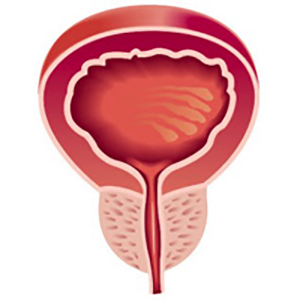The role of irrigation fluid in transurethral resection of the prostate outcomes and surgeon performance

Accepted: October 13, 2023
All claims expressed in this article are solely those of the authors and do not necessarily represent those of their affiliated organizations, or those of the publisher, the editors and the reviewers. Any product that may be evaluated in this article or claim that may be made by its manufacturer is not guaranteed or endorsed by the publisher.
Introduction: Transurethral resection of the prostate (TURP) is the gold-standard for the treatment of benign prostate enlargement (BPE) associated with lower urinary tract symptoms (LUTS), after failure of conservative therapy. At present, only resection-rate (grams of prostate resected over time) is regarded as an efficiency parameter to evaluate the skill of the operator and to assess the outcome of the procedure. Materials and methods: Five surgeons performed TURP using a Gyrus-type bipolar system in 123 patients with BPE/LUTS who came to our observation from June 2016 to December 2019. The amount of irrigation fluid used during the procedure was registered and correlated to the operating time, resection-rate, prostate adenoma weight, post-operative bladder irrigation time, intraoperative bleeding and days of catheterization. Results: We found an inverse correlation between the amount of irrigation fluid used during TURP and the resection-rate recorded for all operators, according to Spearman's Correlation (r = -0.78, p = 0.002); a direct correlation was also found between the amount of irrigation fluid and the adenoma weight. Finally, we also found a direct correlation with intraoperative bleeding and the duration and amount of bladder irrigation during and after TURP. Conclusions: The amount of irrigation fluid used is proposed as a reliable parameter to estimate the efficiency of the endoscopic procedure as well to assess the skill of the operator and shortterm results. The observed data encourage the possibility of applying this new efficiency indicator to all endoscopic maneuvers.
EAU Guidelines. Edn. presented at the EAU Annual Congress Amsterdam 2022. ISBN 978-94-92671-16-5.
Cury J, Coelho RF, Bruschini H, Srougi M. Is the ability to perform transurethral resection of the prostate influenced by the surgeon’s previous experience? Clinics. 2008; 63:315-20. DOI: https://doi.org/10.1590/S1807-59322008000300005
The Oxford English Dictionary, Oxford University Press, 2019.
Skolarikos A, Rassweiler J, de la Rosette JJ, et al. Safety and Efficacy of Bipolar Versus Monopolar Transurethral Resection of the Prostate in Patients with Large Prostates or Severe Lower Urinary Tract Symptoms: Post Hoc Analysis of a European Multicenter Randomized Controlled Trial. J Urol. 2016; 195:677-84. DOI: https://doi.org/10.1016/j.juro.2015.08.083
Kallstrom R, Hjertberg H, Kjolhede H, et al. Use of a virtual reality, real-time, simulation model for the training of urologists in transurethral resection of the prostate. Scand J Urol Nephrol. 2005; 39:313-20. DOI: https://doi.org/10.1080/00365590510031246
Huang X, Wang L, Wang XH, et al. Bipolar transurethral resection of the prostate causes deeper coagulation depth and less bleeding than monopolar transurethral prostatectomy. Urology. 2012; 80:1116-1120. DOI: https://doi.org/10.1016/j.urology.2012.07.024
Mamoulakis C, Ubbink DT, de la Rosette JJ. Bipolar versus monopolar transurethral resection of the prostate: a systematic review and meta-analysis of randomized controlled trials. Eur Urol. 2009; 56:798-809. DOI: https://doi.org/10.1016/j.eururo.2009.06.037
Huang X, Wang XH, Wang HP, et al. Comparison of the microvessel diameter of hyperplastic prostate and the coagulation depth achieved with mono- and bipolar transurethral resection of the prostate. A pilot study on hemostatic capability. Scand J Urol Nephrol. 2008; 42:265-268. DOI: https://doi.org/10.1080/00365590701702168
Tan GH, Shah SA, Ali NM, et al. Urethral strictures after bipolar transurethral resection of prostate may be linked to slow resection rate. Investig Clin Urol. 2017; 58:186-191. DOI: https://doi.org/10.4111/icu.2017.58.3.186
Copyright (c) 2023 the Author(s)

This work is licensed under a Creative Commons Attribution-NonCommercial 4.0 International License.
PAGEPress has chosen to apply the Creative Commons Attribution NonCommercial 4.0 International License (CC BY-NC 4.0) to all manuscripts to be published.


 https://doi.org/10.4081/aiua.2023.11868
https://doi.org/10.4081/aiua.2023.11868



